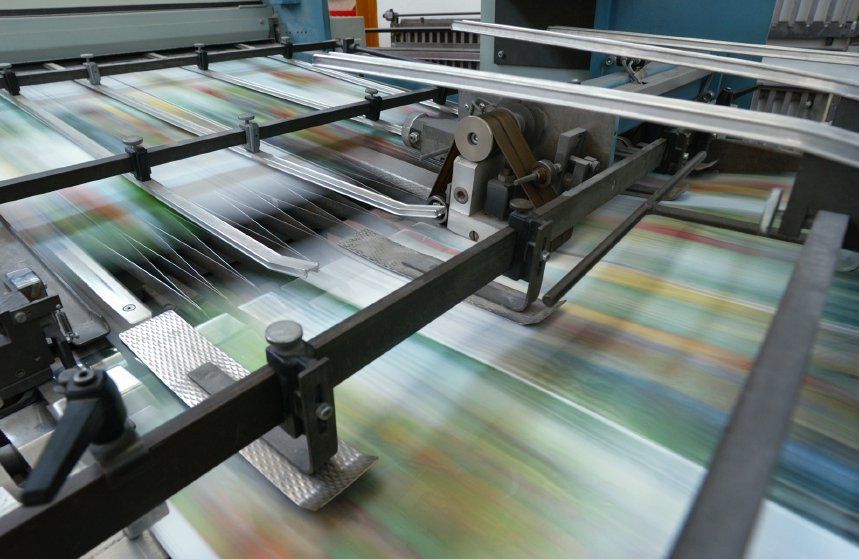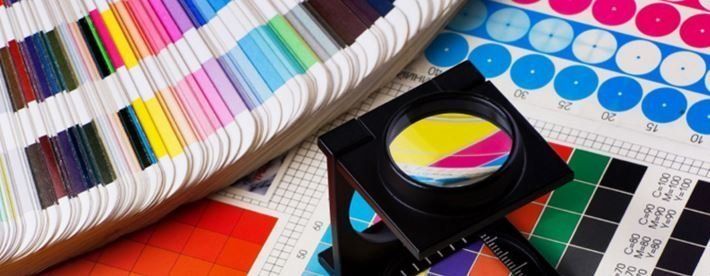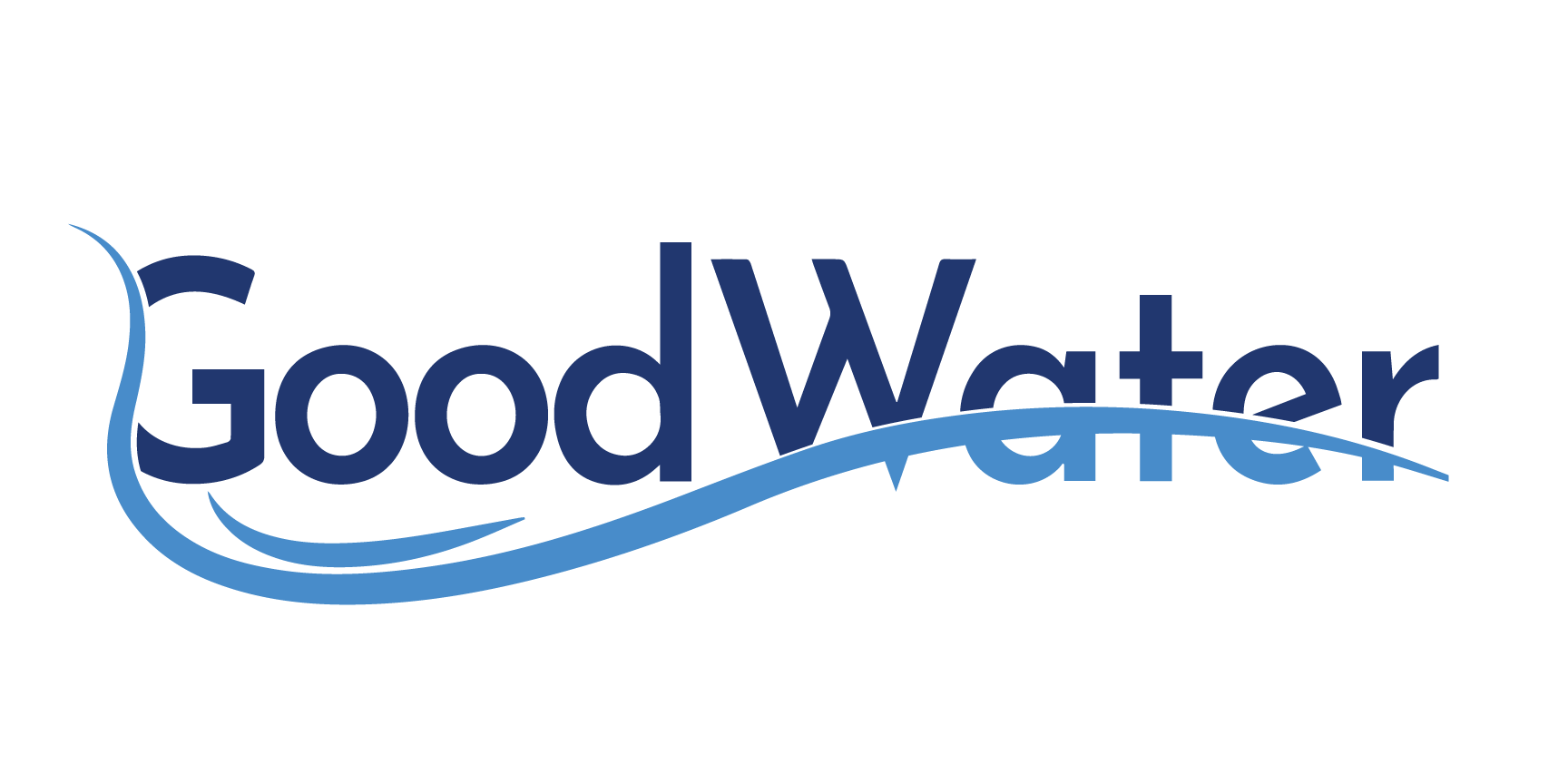COMMERCIAL PRINTING
Commercial Printing
Water is used in some commercial printing processes.
Good Water Company can provide you with the exact treated water that you need for all of your commercial printing needs!
Water is used in some commercial printing processes. Lithography is the most commonly used commercial printing process. It is used to create magazines, books, newspapers, reports, brochures, and much more. The first step is to create a plate which is typically made of aluminum, polyester, or paper depending on how long the run is and how durable the plate needs to be for archiving. Once the plate is created, it is wrapped around the plate cylinder and water is applied to the non-image areas and ink is applied to the image areas. Lithography uses simple chemical processes to create an image. For instance, the positive part of an image is a water-repelling substance, while the negative image would be water-retaining. Thus, when the plate is introduced to a compatible printing ink and water mixture, the ink will adhere to the positive image and the water will clean the negative image.
The ideal water used for printing purposes should posses a hardness level of 8 dH to 12 dH and a pH-balance of 4.8 to 5.5. The typical dampening solution temperature should range between 10 degrees C to 15 degree C. At low temperatures condensation water collects on tubes and in the dampening solution vats, and this may lead to the formation of water droplets. Dampening solution additives are complex material systems with various components included to promote adequate emulgation and wetting. They are important for pH-balance adjustment and for stabilization protection against corrosion, for a cooling effect, and in avoiding slime formation.
There are several types of water treatments you can use to achieve the correct degree of water hardness and pH-balance but the most effective way is reverse osmosis. Once treated like this the water is then reconditioned with salts until it reaches a degree of hardness ranging from 8 dH to 12 dH. In order to keep the pH-balance stable, a salt combination is necessary. Correct combinations of acid in the buffer are needed for thorough plate wetting without any deposition. In order to achieve the necessary thorough plate wetting without, on the other hand, causing deposition, the buffer must contain the correct combinations of acid. Buffering prevents paper and ink from altering the pH-balance. In order to determine the quality of the dampening solution, its conductivity should also be determined. Impurities in the dampening solution allow conductivity to increase. Conductivity varies on the water and additives. The temperature, and the concentration of alcohol also influence conductivity.
Good Water Company can provide you with the exact treated water that you need for all of your commercial printing needs!


Want to know a little bit more about our commercial water solutions or equipment?
Have a couple questions about Good Water Company? Please don't hesitate to contact us!
Good Water Company can provide you with the exact treated water that you need for all of your commercial printing needs!
Water is used in some commercial printing processes. Lithography is the most commonly used commercial printing process. It is used to create magazines, books, newspapers, reports, brochures, and much more. The first step is to create a plate which is typically made of aluminum, polyester, or paper depending on how long the run is and how durable the plate needs to be for archiving. Once the plate is created, it is wrapped around the plate cylinder and water is applied to the non-image areas and ink is applied to the image areas. Lithography uses simple chemical processes to create an image. For instance, the positive part of an image is a water-repelling substance, while the negative image would be water-retaining. Thus, when the plate is introduced to a compatible printing ink and water mixture, the ink will adhere to the positive image and the water will clean the negative image.
The ideal water used for printing purposes should posses a hardness level of 8 dH to 12 dH and a pH-balance of 4.8 to 5.5. The typical dampening solution temperature should range between 10 degrees C to 15 degree C. At low temperatures condensation water collects on tubes and in the dampening solution vats, and this may lead to the formation of water droplets. Dampening solution additives are complex material systems with various components included to promote adequate emulgation and wetting. They are important for pH-balance adjustment and for stabilization protection against corrosion, for a cooling effect, and in avoiding slime formation.
There are several types of water treatments you can use to achieve the correct degree of water hardness and pH-balance but the most effective way is reverse osmosis. Once treated like this the water is then reconditioned with salts until it reaches a degree of hardness ranging from 8 dH to 12 dH. In order to keep the pH-balance stable, a salt combination is necessary. Correct combinations of acid in the buffer are needed for thorough plate wetting without any deposition. In order to achieve the necessary thorough plate wetting without, on the other hand, causing deposition, the buffer must contain the correct combinations of acid. Buffering prevents paper and ink from altering the pH-balance. In order to determine the quality of the dampening solution, its conductivity should also be determined. Impurities in the dampening solution allow conductivity to increase. Conductivity varies on the water and additives. The temperature, and the concentration of alcohol also influence conductivity.
Good Water Company can provide you with the exact treated water that you need for all of your commercial printing needs!
Want to know a little bit more about our solutions or equipment?
Have a couple questions about Good Water Company? Please don't hesitate to contact us!
COLORADO LOCATION
NEW MEXICO LOCATION

OUR COMPANY
Water Treatment Experts. Reliable, Local & Affordable.CO Licensed and Insured Water Conditioning Contractor #WC0000011
NM Licensed and Insured Plumbing Contractor #381795
Good Water Company © 2024 | All Rights Reserved
Good Water Company © 2024 | All Rights Reserved |
Website by
WebAct
Website Builder
